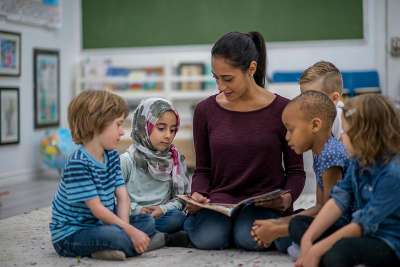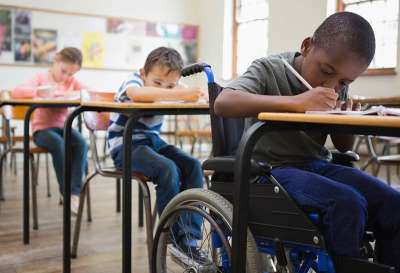Simplifying or Supplementing Existing Materials
The Planning Pyramid is a tool to help teachers plan for adaptations for diverse learners. Although the Pyramid initially was designed for planning for content-area lessons, teachers can also use it to plan for multilevel lessons in reading and mathematics. One goal of the Planning Pyramid is to provide all students with access to the curriculum.
Teachers, researchers, parents, and even students frequently express concern that students with disabilities have limited exposure to the general-education curriculum or that the curriculum is minimized to the point that students are inhibited in their opportunity to learn. At the elementary-school level, students with special learning needs frequently can fully participate in regular classroom instruction using adaptations of simplified or supplemented existing materials. The goal is not to reduce content for students with special learning needs, but to provide tools for them to access content in the fullest sense. Simplifying existing materials can take many forms:
- Rewriting instructional materials in a simplified format.
- Providing summaries, graphic organizers, or outlines of instructional materials.
- Developing study guides to provide support before, during, and after reading.
- Shortening reading or math assignments.
- Adjusting the pacing of assignments to allow for rereadings.
- Color-coding textbooks to highlight key concepts and new vocabulary.
- Audiotaping textbook content.
Supplementing existing materials involves the use of alternative materials to help students master the same content or skills presented in the general curricular materials. Such adaptations include using:
- Direct experiences.
- Films or videotapes.
- Computer software.
Simplifying or supplementing existing materials can be time consuming for teachers. Teachers who plan in advance for such adaptations frequently engage parent volunteers or paraprofessionals in adapting materials.
When done in an organized manner, providing instructional “training wheels” for students is worth the effort. Students of all achievement groupings appreciate teachers who make adaptations for students who need them, and most students prefer using materials that are identical to those used by their same-age peers. Planning can help a teacher create materials that will make these types of adaptations routine and provide a bank of resources to draw upon for future classes.
Story-Reading Guides
Story reading can and should be enjoyable for elementary-school students. Unfortunately, even when students' decoding is adequate, story-reading assignments are troublesome for some young readers. Some children have cognitive difficulty with remembering and retrieving details and key components of the story. Others are unfamiliar with basic story structure due to lack of exposure to literature. Still other youngsters are familiar with alternative story structures due to cultural differences or are more comfortable with oral storytelling traditions than with sharing stories through print.
One way to provide students with a blueprint for learning from narrative text is a Guide for Story Reading (Student handout). Story-reading guides are a way to structure reading and learning from stories to enhance students' comprehension and their ultimate appreciation of the author's words. They are a way to simplify story-reading assignments.
What is the adaptation?Story-reading guides can take a number of forms. Story maps or webs – graphic organizers that students complete as they read a story – include setting and key elements of the plot and are for primary-grade students and other early readers. With picture representations students read or listen to a story, and then illustrate key story features in cartoon-like form.
The Guide for Story Reading (Student handout) not only provides students with a way to record key story components while reading, it also provides a strategy guide for before and after reading. The Guide for Story Reading consists of five steps:
- Get Ready – Activities before reading that help students get involved in the story, activate prior knowledge about the story's setting and focus, and predict what the story will be about.
- Get Set – A set of activities to complete after reading the first few pages of the story.
- Go – Activities during reading that prompt active reading.
- Cool Down – Activities to complete immediately after reading the story that promote immediate recall and help students record information to review for tests or classroom discussion.
- Follow Up – Activities to promote critical thinking about the story or to promote appreciation. Follow-up activities can include art, writing, drama, cooking, or additional reading activities.















